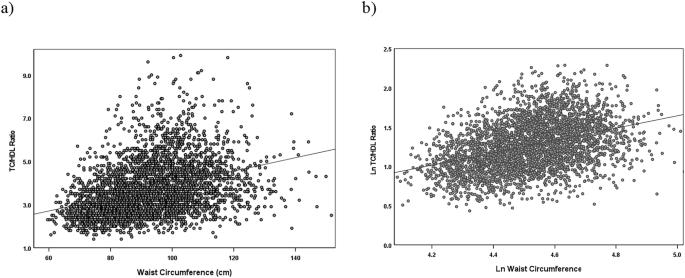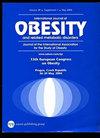在预测动脉粥样硬化风险指数(TC/HDL-C)比率时,模拟人体测量和行为因素之间的直接和间接关联。
IF 3.8
2区 医学
Q1 ENDOCRINOLOGY & METABOLISM
引用次数: 0
摘要
目的:确定体型与缺血性心脏病(IHD)相关的动脉粥样硬化危险指数(总胆固醇/高密度脂蛋白(TC/HDL)比值)之间的关系。方法:基于对数变换异速模型得到的效应量,采用异速模型揭示体型和社会行为与TC:HDL之间的关系。使用中介分析来解释为什么中度(MPA)或剧烈体力活动(VPA)与体型尺寸密切相关或与TC/HDL直接相关。结果:动脉粥样硬化风险指数(TC/HDL)比率的异速生长模型表明,腰围(WC)和吸烟与胆固醇相关指数和IHD具有最强的关联(最强的效应量)。研究还发现了与身高相关的一个很强的负指数或效应,这表明高个子的人本身就具有较低的胆固醇相关指数。中介分析发现,MPA和VPA都与降低WC有很强的相关性,但只有VPA与TC/HDL有直接的相关性。结论:这些结果证实,身高较高、不吸烟且WC较小的人更有可能具有较低的动脉粥样硬化风险指数(TC/HDL)比率,从而降低IHD的风险。参加有规律的适度运动以减少他们的WC与降低动脉粥样硬化风险指数(TC/HDL)并不一定或直接相关,从而降低IHD的风险。较高的身高和较小的腰围(可能但不一定是由于服用MVPA)与较低的动脉粥样硬化风险指数(TC/HDL-C)比值相关,因此患IHD的风险较低。本文章由计算机程序翻译,如有差异,请以英文原文为准。

Modelling the direct and indirect associations between anthropometric and behavioural factors when predicting atherogenic risk index (TC/HDL-C) ratio
To identify the association between body size and atherogenic risk index (Total Cholesterol/High Density Lipoprotein (TC/HDL) ratio) associated with ischemic heart disease (IHD). Allometric models were used to reveal the association between body size and social behaviours associated with TC:HDL based on the effect sizes obtained from the log-transformed allometric models. Mediation analysis was used to explain why moderate (MPA) or vigorous physical activity (VPA) were strongly associated with body size dimensions or directly associated with TC/HDL. An allometric model for the atherogenic risk index (TC/HDL) ratio identified waist circumference (WC) and smoking as having the strongest association (strongest effect sizes) with cholesterol-related indices and hence IHD. A strong negative exponent or effect associated with height was also identified, suggesting that taller individuals will inherently have lower cholesterol-related indices. The mediation analysis identified that MPA and VPA were both strongly associated with reducing WC but only VPA was directly associated with the TC/HDL. These results confirm that taller, non-smokers who have smaller WC are more likely to have a lower atherogenic risk index (TC/HDL) ratio and hence be at reduced risk of IHD. Participation in regular moderate activity to reduce their WC is not necessarily or directly associated with lower atherogenic risk index (TC/HDL) and hence a lower risk of IHD. Being taller with smaller WC, possibly but not necessarily due to taking MVPA, was associated with a lower atherogenic risk index (TC/HDL-C) ratio and hence have lower risk of IHD.
求助全文
通过发布文献求助,成功后即可免费获取论文全文。
去求助
来源期刊

International Journal of Obesity
医学-内分泌学与代谢
CiteScore
10.00
自引率
2.00%
发文量
221
审稿时长
3 months
期刊介绍:
The International Journal of Obesity is a multi-disciplinary forum for research describing basic, clinical and applied studies in biochemistry, physiology, genetics and nutrition, molecular, metabolic, psychological and epidemiological aspects of obesity and related disorders.
We publish a range of content types including original research articles, technical reports, reviews, correspondence and brief communications that elaborate on significant advances in the field and cover topical issues.
 求助内容:
求助内容: 应助结果提醒方式:
应助结果提醒方式:


